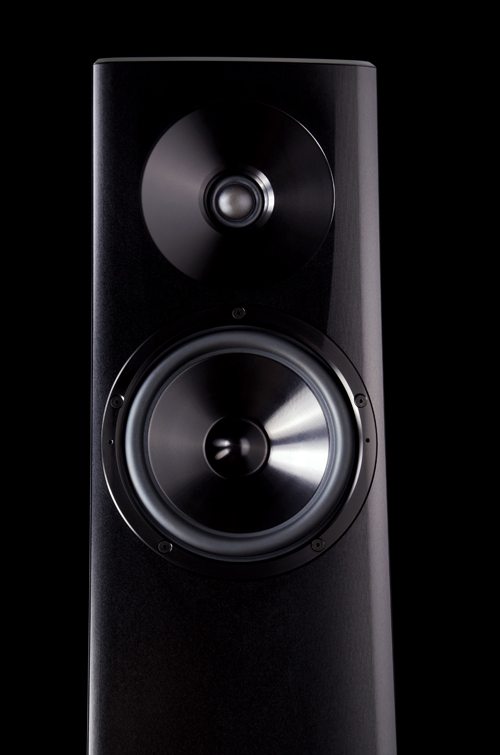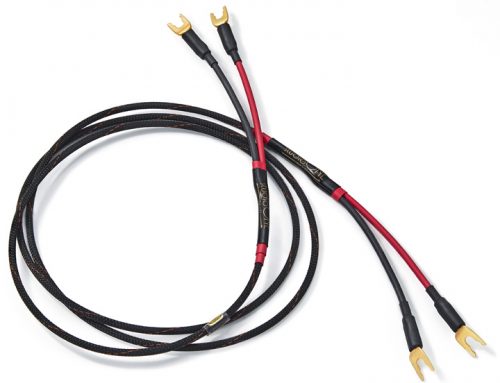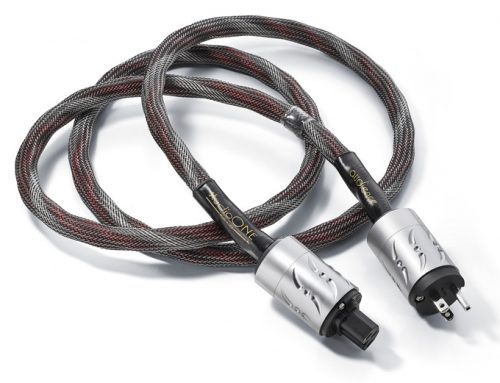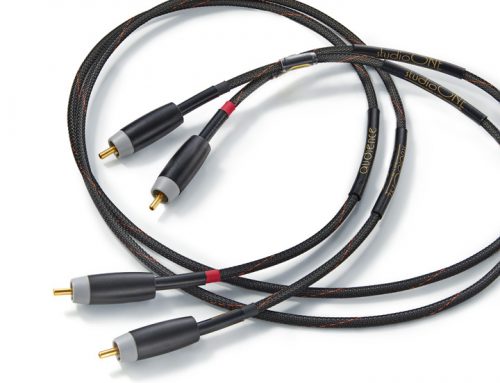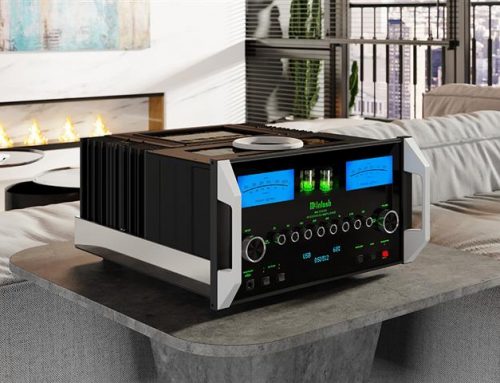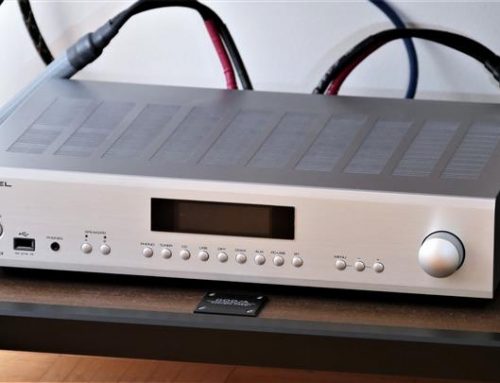The 5th and final trademarked technology is FocusedElimination, which refers to the reduction of the internal friction which prevents the drivers from working in a purely linear fashion. In a high friction (or lossy) enclosure, you get a slow boxy sound. On the other hand, low losses lead to a tight punchy bass and quick reactions. Losses are reduced here by eliminating internal standing waves, achieved by the special geometry of the interior walls and the use of anti-resonance technology applied to specific pinpoint locations within the cabinet, rather than the traditional approach of employing considerable amounts of cabinet stuffing and panel damping.
There are many other examples of meticulous attention to detail and parts quality here. Even the spiked feet and the speaker terminals are manufactured in house on the CNC machines, and the internal wiring is the excellent Kimber Kable Select.
You are not going to pair these exotic speakers with run of the mill electronics, because they will expose every fault in the rest of the system. So for this special review I matched them up with reference level components from EMM Labs (XDS1 SACD Player, Pre 2 Preamp), ModWright Instruments (KWA 150 Signature Edition Power Amp) and Nordost (Valhalla) cables, which in combination with the Carmel 2 touch six figures.
Sidebar: Top Notch Recordings Used to Evaluate the Carmel 2
Art Pepper Meets the Rhythm Section [XRCD Japan]
MA on SA [MA Recordings]
AfroCubism [NoneSuch]
Diana Krall – All for You [Justin Time]
Miles Davis – The Original Mono Recordings [Columbia]
The Beatles – Love [Capitol]
Bartok Concerto for Orchestra – Reiner [Living Stereo SACD]
Beethoven – The Late Sonatas – Igor Levit [Sony Classical]
Normally, in a system of this caliber, the level of distortion in the electronics is far below that of the speaker system, so that the speaker becomes the dominant factor in the overall sound. However the extraordinary lengths to which Yoav Geva has gone to reduce all elements of distortion in the Carmel mean this is not the case. We are listening right through into the electronics. The Carmel can easily differentiate between different types of cables, different digital sources and whatever amplifiers you may throw at it. It doesn’t really have a character of its own. It simply gets out of the way, as a fine component should. When all elements of a system do that, as they do here, then you are left just listening to the recordings, not the equipment reproducing those recordings. There is a clarity and three dimensionality to the music that approaches the sound of live music. In particular, you experience a dynamic range and speed of attack rarely approached with conventional HiFi. Sadly, when the recordings are subpar (as they often are) you can hear that too. Compressions, artificial boosts to the presence region, early digital nasties, poor microphone placement and street noises, all come through with remarkable clarity, making such recordings very uncomfortable to listen to.
Conversely, when the recording engineers really know what they are doing the sound is incomparable, very lifelike and extremely enjoyable, even thrilling. Your body senses it. Everything makes sense. You can hear every instrument clearly even in a complex mix like a Brahms Symphony or a large jazz orchestra. We have all heard splendid clarity at audio shows or at a good HiFi store where the material is often a small jazz combo or a four or five piece pop group. Imagine when that clarity extends to large choirs, full orchestra, a church organ, or anything you throw at it, as long as the recording was made with care and attention.
Now these speakers reach down deep, but not to subterranean depths. You’ll want the bigger speakers in the YG range for that. But except in electronic music, you will rarely find significant musical content below the 32 Hz mark that YG claim for the Carmel 2. I tried Bach’s Passacaglia and Fugue to see how well the Carmel would fare on deep organ notes, and I could not have wanted more. The whole room was energized. The midrange is impeccable, and the high frequency range is the most extended and natural I have ever heard, identical in fact to the Carmel’s bigger brothers.
Besides the extreme low bass, what other limitations do these speakers have? The only thing I can put my finger on is maximum decibel level. There are are a lot of speakers that can handily outperform the Carmel 2 on this measure, including some in the three to four thousand dollar range. So how does this speaker compare to other high end speakers? Most similarly priced models will be larger and capable of either greater low end extension or high sound pressures or likely both. Some will boast three or more drivers as opposed to the two driver setup used here, and the woofer will be of a larger diameter. So quantity of sound may very well be higher elsewhere. But quality? I have not found this degree of accuracy of tonal colour elsewhere, such three dimensional imaging, such speed of response or such true to life dynamics, within the volume and frequency range the Carmel 2 covers. You may be wondering if all this accuracy means a cold or clinical presentation. I did not find any evidence of that. Human voices gain in realism and intimacy, strings have a very natural colour and deep bass is pitch accurate and full. The best single word description I can give the Carmel 2 is musical.
You should also consider how well this speaker would fit into your listening room and how well it would pair up with your amplifier. As a sealed box, it’s not as fussy about the distance from the rear and side walls as a lot of larger rear ported speakers, but it’s not the easiest speaker to drive. Its efficiency is around 87dB (moderate) and it needs an amp that can pump a good deal of current into a low impedance load. It may be a better match for a solid state amp than for most tube amps. The ModWright amp I used for this review puts out 150 wpc into 8 ohms and 200 wpc into 4 ohms, but occasionally the amp’s protection circuits cut in when I really turned up the wick in large scale symphonic works because of the high temperatures measured at the heat sinks. So that’s an indication the Carmel can be quite demanding. You should try before you buy, or be prepared to upgrade your present amp if necessary.
The Carmel 2 is equally at home in all types of music, even hard rock, but it isn’t an impressive sounding animal. It just gets out of the way of the music, gets your feet tapping and nails you to the sofa. I’m a believer. Happy listening!
YG Acoustics
www.yg-acoustics.com
801-726-3887
YG Acoustics Carmel 2 Loudspeakers
Price: $24,300 US

